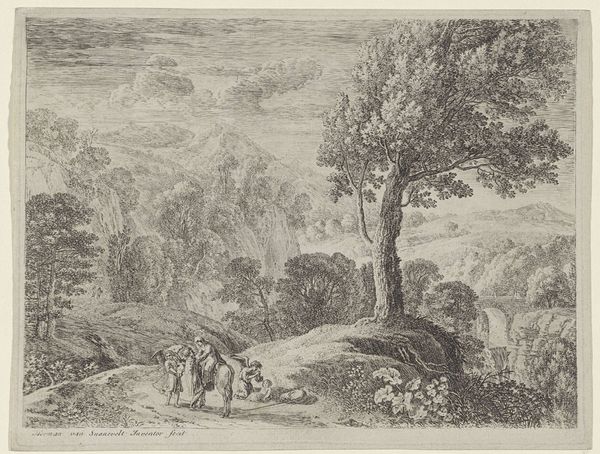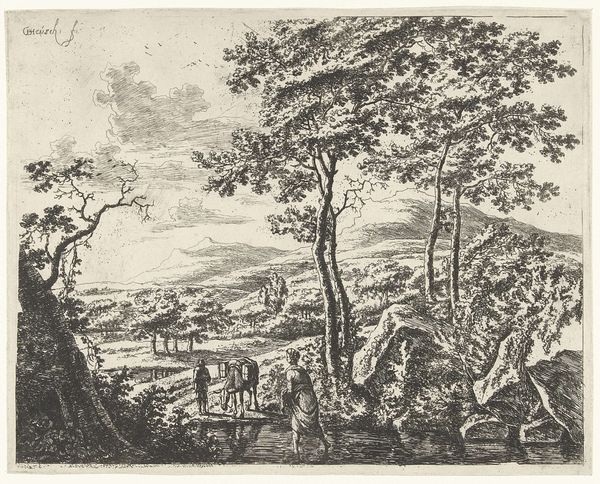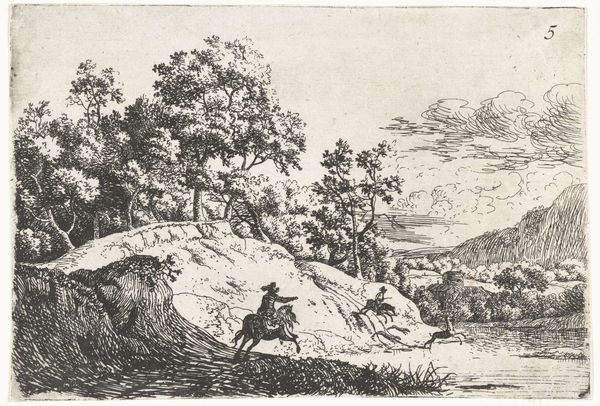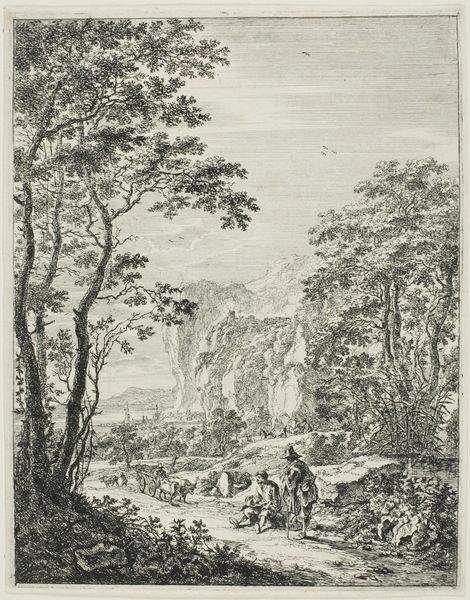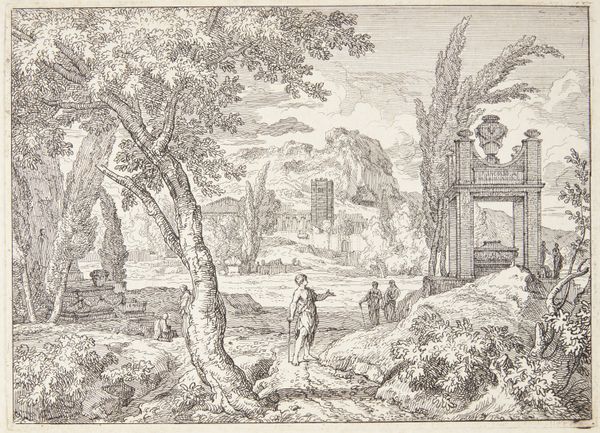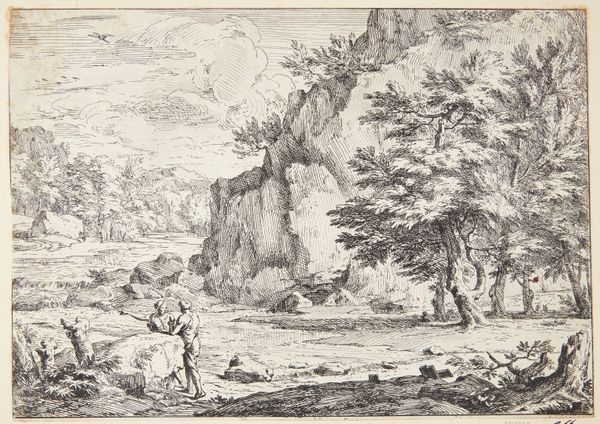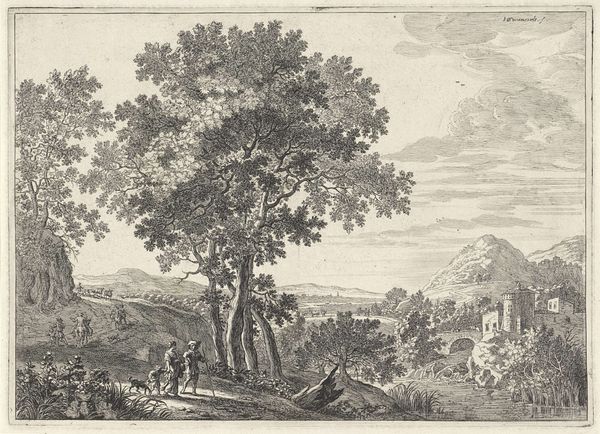
etching, engraving
#
baroque
#
pen drawing
#
etching
#
old engraving style
#
landscape
#
figuration
#
linework heavy
#
thin linework
#
line
#
genre-painting
#
history-painting
#
engraving
Dimensions: height 137 mm, width 161 mm
Copyright: Rijks Museum: Open Domain
Curator: Willem de Heusch's engraving, "Landschap met Pan en Syrinx," probably created sometime between 1635 and 1692, captures a dynamic scene from classical mythology. I'm immediately struck by its chaotic energy! Editor: Chaos is certainly one way to put it. My immediate impression is one of disparity. We have, in the foreground, the mythic figures and chase— rendered in very fine linework — contrasted with the sweeping landscape and almost crude depiction of clouds in the distance. It’s tonally and symbolically unbalanced. Curator: I see what you mean about the visual tension. For me, though, that disjuncture speaks to the very heart of the myth. Pan's clumsy, lustful pursuit versus Syrinx’s desperate flight to maintain her autonomy. De Heusch highlights their asymmetrical desires through composition itself. The details are quite astonishing when you get close. Editor: Yes, Syrinx's transformation into reeds to escape Pan resonates deeply with themes of resistance. But think about the era this engraving was made. This scene speaks not just of individual autonomy, but of a struggle against societal expectations of women, too. Curator: Absolutely. It makes you think, doesn’t it? But back to the artistic perspective. The whole scene almost bubbles and shimmers because of the layering of lines. The foliage feels dense and alive; you can almost hear the rustling of the leaves as Syrinx escapes into the reeds! De Heusch's control over the etching needle must have been something extraordinary! Editor: Consider also, though, the power dynamics embedded within the story itself, echoed in De Heusch’s time and also ours. How do depictions of classical myths in the Baroque period serve to subtly reinforce patriarchal power structures through idealized or, conversely, cautionary tales of female agency? And it's an easy jump to similar ideas reflected in our age. Curator: It gives us so much to unpack about our perceptions of gender roles! All these interpretations make me love De Heusch’s etching even more—such tiny lines, such a grand tapestry of ideas. Editor: Agreed. Seeing art as a conversation between then and now... it helps make sense of our place within history.
Comments
No comments
Be the first to comment and join the conversation on the ultimate creative platform.

